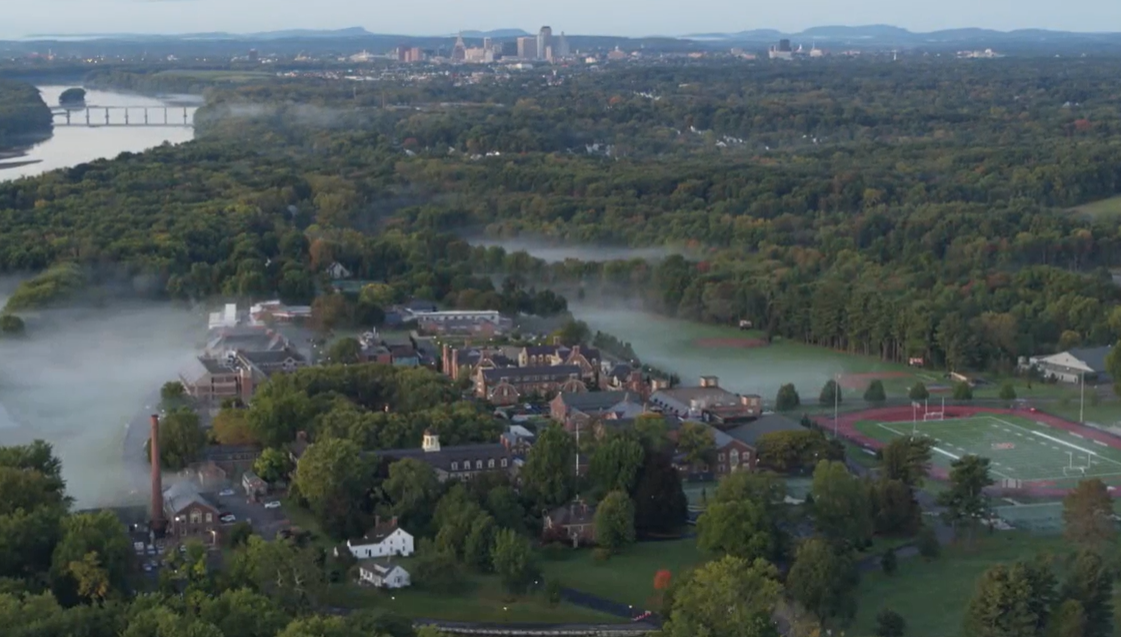Loomising Large
Loomis Homestead
Windsor
Windsor claims, with some authority, to be Connecticut’s oldest town. And this house, on the campus of the Loomis Chaffee School, is the oldest house in Windsor. No, the transitive property (or whatever) doesn’t work here. The oldest house still standing in Connecticut is the Henry Whitfield House in Guilford. But that 1639(!) house is made of stone and the Loomis Homestead is timber framed. This here Windsor house is the oldest wood-framed house, nay, the oldest wooden building in all of Connecticut.

It was built sometime between 1640 and 1652, dating back to the first few years of the town’s settlement, and it is also among the oldest existing buildings in the country. I don’t know where it ranks is oldest wooden buildings in America, but surely it’s top 10. If not, it is in my heart. Even if the house has been significantly expanded since the mid 17th-century and the ell on the right side, built by Joseph Loomis himself, is the only part that’s, like old old.
The information for this page is from Derek Strahan on Lost New England. I guess we’ll have to trust him. I want to, because he’s unearthed some nuggets.
After a three-month voyage aboard the Susan and Ellen, the Loomis family arrived in Boston, and they lived nearby in Dorchester for the next year. However, in 1639 they joined a number of other Massachusetts colonists and relocated to the Connecticut River Valley. The following year, Joseph was granted 21 acres of land here in Windsor, located along the south side of the Farmington River, just to the west of its confluence with the Connecticut River. He built this house soon after, on a section of raised land that was known as “The Island,” because the surrounding meadows would often flood during spring freshets, effectively making the property an island.
Mary Loomis died in 1652, and Joseph in 1658, and their son John inherited the property. He had been about 16 years old when he and his family left England, and he lived here in Windsor until 1652, when he moved to Farmington. However, he moved back to Windsor in 1660, where he became a distinguished town citizen. He served as a deacon in the church, and he also represented the town in the Connecticut General Court from 1666-1667 and 1675-1687. John and his wife Elizabeth had eleven sons and two daughters, although only eight of their children would live to adulthood. Their only surviving daughter, Elizabeth, married Peter Brown, and they had a son, John Brown, who would become the great-grandfather of the prominent abolitionist of the same name.
You see? Nuggets! The house passed through the Loomis family for generations all the way deep into the 20th when the final Windsor Loomis (of this line) passed away. By then, a diffent line of Loomises had created the Loomis Institute (later, Loomis Chaffee School) and everyone agreed to leave the house intact and build the campus around it on “the island,” which is a term still in use today (because the Farmington River still floods the surrounding low-lying areas).
Lots of renovations were done to the house in the 1940’s, but the exterior generally looks as it did 300 years ago. I’ve read that there were thoughts to make a little Loomis museum inside it, but that’s never happened. I have a man on the inside there, and he keeps me updated, but as of late 2021, the homestead is just that… the homestead. And nothing interesting goes on inside it – according to my man on the inside.

There it is, front and center
CTMQ’s Houses, Ruins, Communities & Urban Legends

 Kirin Loomis says
Kirin Loomis says
December 26, 2022 at 7:18 pmThank you for all the family info! I’m the daughter of Boyd Edwin Loomis, who was born in 1913.
 JOHN PORTER says
JOHN PORTER says
October 7, 2024 at 1:06 amHi,
I’m John Porter and the descendant of John Porter and Anna White Porter. Anna White was Mary White Loomis’s sister. John and Anna came over on the same ship, the “Susan and Ellen”. They all arrived in Windsor on 17 Aug 1639 in the company of Rev. Ephraim Huet. My family thinks it was the first English settlement in Connecticut. The Porter’s and Loomis’s were friends and lived “next door” for most of their lives. I would like to imagine that they worked on the old section together since their wives were sisters. Just retired as a Delta pilot so want to visit and stand in the same space. I imagine the courage it took to head into the wilderness.